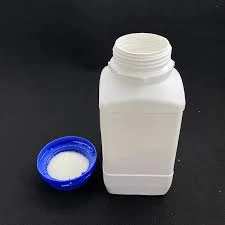Physical Treatment of Wastewater An Overview
Wastewater treatment is an essential process that aims to remove contaminants from wastewater before it is released into the environment or reused. This process can be broadly categorized into three main stages physical, chemical, and biological treatments. Among these, physical treatment plays a crucial role in the initial stages of wastewater management by targeting the removal of suspended solids, debris, and certain pollutants. This article will explore the various methods of physical treatment, their applications, advantages, and limitations.
Methods of Physical Treatment
Physical treatment of wastewater primarily involves the use of mechanical and physical processes to separate solids from liquids. Key methods include
1. Screening This is one of the first steps in the physical treatment process. Screening involves the use of barriers, such as grates or mesh screens, to remove large objects from the wastewater. These may include sticks, leaves, plastic bottles, and other debris that could damage equipment or hinder subsequent treatment processes.
2. Sedimentation After screening, the wastewater is directed to a sedimentation tank. In this process, the velocity of the wastewater is reduced, allowing solids to settle at the bottom due to gravity. The settled material, known as sludge, is periodically removed for further treatment or disposal.
3. Filtration This method involves the passing of wastewater through filters to remove smaller particles and suspended solids. Various types of filters may be used, including sand filters, activated carbon filters, and membrane filters. Filtration improves the quality of the effluent by reducing turbidity and suspended solids.
4. Flotation Dissolved air flotation (DAF) is a physical treatment method that employs fine bubbles to attach to suspended solids, causing them to float to the surface. The floating solids are then skimmed off, resulting in cleaner water. This process is often used for treating industrial wastewater, particularly where oils and greases are present.
Applications and Advantages
physical treatment of waste water

Physical treatment methods are applied in a range of settings, from municipal wastewater treatment plants to industrial facilities. The advantages of these processes include
- Effectiveness Physical treatments can significantly reduce the concentration of suspended solids, which is critical for protecting downstream biological treatments.
- Simplicity Many physical treatments require less specialized knowledge and equipment compared to chemical or biological methods, making them relatively easy to implement and operate.
- Immediate Results These methods provide quick results, as they can instantly remove large quantities of solids from wastewater.
- Energy Efficiency Physical treatment processes often consume less energy than chemical or biological treatments, contributing to lower operational costs.
Limitations
Despite their advantages, physical treatment methods possess certain limitations. For instance, while they effectively remove solids, they do not significantly reduce dissolved pollutants, nutrients, or pathogens. This necessitates the incorporation of additional treatment processes to achieve comprehensive wastewater treatment. Additionally, some physical methods, such as filtration, may require regular maintenance and replacement of media, which can add to operational costs.
Conclusion
In conclusion, the physical treatment of wastewater is a vital first step in the broader wastewater management process. By utilizing methods such as screening, sedimentation, filtration, and flotation, facilities can significantly reduce the load of suspended solids and improve water quality. However, physical treatment alone is insufficient for achieving complete wastewater purification. It is essential to integrate physical treatment with chemical and biological processes to ensure that all contaminants are adequately addressed. As global water scarcity continues to rise and environmental regulations become more stringent, the role of effective wastewater treatment—starting with physical methods—will undoubtedly become increasingly important.

